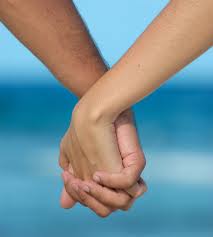
It isn’t often that the abundant goodness that surrounds us really registers in our minds. Rarely, if ever, do we consciously seek to recognise, leave alone celebrate, it. And, that’s one reason why for many of us life seems dull and routine and filled with enormous negativity. But, if you make it a point just to be aware of goodness whenever and wherever you find it, you will discover—as I am beginning to—that your life will cease to be a drag and you’ll see more than enough reason to live joyfully.
In just this last fortnight I’ve had several amazing experiences of sheer goodness. Now, it isn’t that all this goodness is descending on me all of a sudden. I am sure I’ve always been surrounded with goodness all my life—good things happening to and around me, good people near me sending out good energy and so on—but it’s only recently that I began to learn the need to consciously notice it.
Travelling by train the other day from Bangalore to Bidar, in northern Karnataka, I shared the compartment with a young man and woman. They must have been in their twenties. When I first spotted them, I took them for intimate friends or even for a honey-mooning couple. No husband and wife married for a day over a year would, of course, giggle and gurgle and behave with such joyful spontaneity! You should have seen the fun the two had—the way they laughed at each other’s jokes, playfully slapped each other on their backs, forced one another to eat this and that, and kept talking almost non-stop! You can’t imagine my pleasant surprise when I discovered that these two were actually siblings, and that the brother was accompanying his sister to Bidar, where she had to appear for an examination.
Now, I’d never before seen grown-up siblings behaving with such intense and abundant love and gaiety. In many cases, while brothers and sisters may get along wonderfully as kids, they tend to grow apart when they enter their teens. In many other cases, siblings never get along at all, not even as children. In both types of cases—which are all too familiar—once siblings grow up, it is not uncommon for them to become cold and distant, or even viscerally hostile to each other. Sometimes, you’d think siblings are born and sworn enemies, and that there’s no one else whom they love to hate than each other!
So, when I learned that the couple whom I was travelling with were actually siblings, you would agree that it was adequate cause to be completely taken aback! I couldn’t but help tell them that they were simply an amazing pair! And, even as I said to them that they were the first set of grown-up siblings whom I had seen behaving with such uninhibited love, I knew how and why it was that the two were so close to each other. I had guessed right. Their parents, they told me, deeply loved and respected each other. While they must certainly have had their differences, I suppose they had learnt to understand, accept and live with them. So, the children in the family had grown up in a loving atmosphere, reared by parents who deeply respected each other. Then, the parents had also given their children abundant love, and had encouraged them to do things on their own. The love that the parents had for each other, then, and the love with which they reared their children, had definitely much to do with the abundant love that these two siblings still had for each other even after they had passed out of their teens.
But there was more to this, though. The siblings’ parents had made it a point for the entire family to do things together—seeing movies, going out for picnics, taking evening walks and the like. And that’s one major reason why the children still remained close to each other, and to their parents, too. Moreover, the children (and there were several in this family—not just these two who were travelling with me) had, from childhood onwards, been encouraged by their parents to play with each other and to share their things. And that is why the children, who had all grown up now, still remained closely involved in each other’s lives. It wasn’t, as in many other families, that the older children didn’t have anything at all to do with the younger ones, and that they had separate sets of friends. Nor was it that the boys in the family didn’t grow up playing with the girls, that they had only male friends and their sisters only female friends, or that the boys played ‘boyish’ games and the girls played only with dolls. The children in this family grew up playing together, doing things together, learning to have fun together, and to celebrate life together—and that was exactly what this brother and sister were still doing, right in front of me as the train chugged ahead towards its destination!
And, what was even more amazing about this family was that it was plainly lower-middle class. The boy and the girl spoke in a regional language between themselves—not English—so they weren’t the hoity-toity sort, the type who cough up hefty sums to enrol in ‘relationship management’ courses to learn how to get over ‘relationship problems’. Their parents lived in a small, mofussil town in ‘backward’ northern Karnataka, near the Maharashtra border. So, they were definitely not even mid-middle class by any standard. Yet, I’m quite sure their parents had never needed to read a book or attend a special course to tell them how to bring up their children in such a way that they grew up into being and remaining wonderful friends. It was pure and simple love and understanding—between the parents, first, and, then, between them and their children—that accounted for the amazing friendship that this brother and sister still enjoyed.









Comments
Add new comment